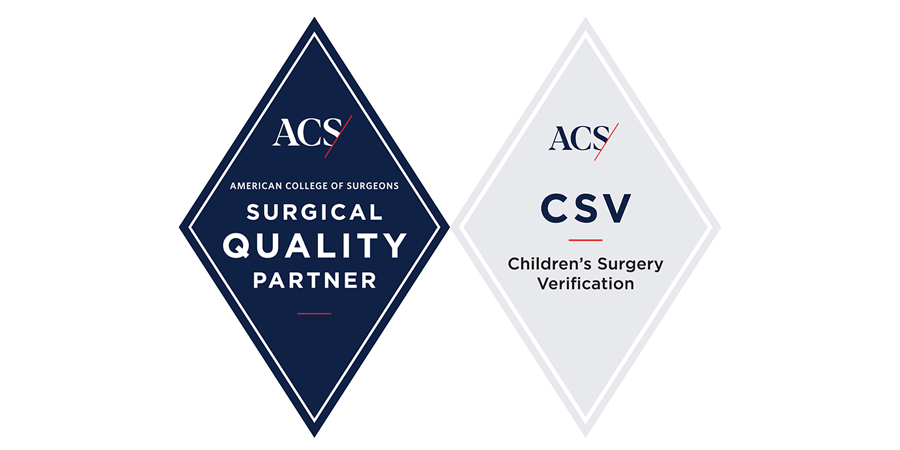Preparing Your Child for Sedation
What is Sedation?
Your child has been scheduled for a procedure or test that may require sedation. Sedation means that your child will be given medicine to help decrease anxiety or pain, to make them sleepy, to help hold still, or a combination of these during the procedure or test.
A sedation provider will talk to you about the type of sedation that can be given to your child and the way that the sedation is given. This may or may not require your child to have an intravenous catheter ("IV") placed in order to administer the medication.
What do you need to do AT HOME to get your child ready?
To keep your child safe when they are being sedated, you must follow these instructions carefully.
Eating and Drinking:
The instructions below are to prevent your child from having an upset stomach and vomiting during the procedure.
It is very important to follow strict instructions for eating and drinking prior to the procedure or test. Stop giving your child food or drinks as follows:
- 2 hours before their appointment for clear liquids*
- 4 hours before their appointment for breast milk
- 6 hours before their appointment for infant formula or non-human milk
- 8 hours for a full or “fatty” meal
*Clear liquids include:
Infants - Water or Pedialyte®, Enfalyte®, or other generic electrolyte replacement solutions.
Older children - Apple/grape juice (or similar juices that do NOT contain pulp), water, Pedialyte®, Enfalyte®, other generic electrolyte replacement solutions, non-carbonated beverages.
Medications at Home:
Regularly scheduled medications should be given unless instructed otherwise. A small sip of water can be given if needed for medications. Bring all medications your child regularly receives with you so that the nurse or doctor can check them.
Illness
If your child has any of the following symptoms, they may not be able to be sedated. Please call your doctor or the department where the test or procedure is scheduled if your child has any of the symptoms listed below, or exposure to contagious disease within 24 hours of the test or procedure. This will help us decide if it is still okay for your child to be sedated, or if it would be safer to reschedule to another day:
- Very stuffy nose or congestion, especially if worse than usual for your child.
- Frequent coughing, especially at night.
- Wheezing.
- Difficulty breathing.
- Fever.
- Vomiting.
- Diarrhea.
- Diagnosis of bronchiolitis, croup, pneumonia, or other respiratory illness within one week prior to procedure or test.
- Currently on treatment for any infection.
Pregnancy Testing
Nursing staff will obtain a menstrual history for all female patients. Female patients who have begun menses or are age ten years or older shall be counseled that administering or exposing pregnant females to anesthetics, medications, radiation and/or surgery is undesirable. All female patients’ ages 12 years and older, and all female patients who have started menses, are required to have a pregnancy test. Patients ten to eleven years old will be offered pregnancy testing regardless of the menstrual history (refusal will be documented).
Summary of Testing Indications:
Testing Required = Age > 12y/o and/or History of Menstrual Cycle.
Testing Offered = Age 10 - 11y/o without history of Menstrual Cycle (documented if declined).
Disclosure of Positive Test Results:
Positive test results will be discussed privately with the patient if the parent/guardian is not aware of the situation. The patient will be encouraged to discuss the situation with their parent/guardian. For more information on obtaining a minor’s health records and test results, see Virginia Code Section 54.1-2969.
Previous Sedation:
If your child has been sedated before, please let the doctor or nurse know if there were any problems with the sedation.
Special equipment:
Please inform the doctor or nurse if your child has any special medical equipment (CVL, Portacath, tracheostomy, apnea monitor, feeding tube, VP shunt, implantable devices, metal rods/screws/plates, etc.).
Schedule a pre-visit with a Child Life Specialist:
You may schedule a pre-visit with a Child Life Specialist to explain the procedure to your child. We encourage this to prepare your child and reduce anxiety. The pre-visit is usually scheduled a few days prior to the procedure or test. If you’re interested in scheduling this visit, we recommend calling as soon as you know the date of the procedure or test, so that we can schedule a time that works best for you.
- If your child’s procedure or test is scheduled at the CHKD Day Surgery Department, call (757) 668-6748 to schedule a pre-visit with a Child Life Specialist. If no answer, please leave a message and your call will be returned within 1-2 business days.
- If your child’s procedure or test is scheduled in the Radiology Sedation Infusion Unit, call (757) 668-6195 to schedule a pre-visit with a Child Life Specialist. If no answer, please leave a message and your call will be returned within 1-2 business days.
The department performing the procedure or test will contact you the day before to review instructions and to answer any questions.
- If your child’s procedure or test is scheduled at the CHKD Day Surgery Department, you may reach us Monday through Friday, 8:00 AM to 4:00 PM at (757) 668-7332.
- If your child's procedure or test is scheduled in the Radiology Sedation Infusion Unit, you may reach us Monday through Friday, 7:00 AM to 5:00 PM at (757) 668-7087.
Disclaimer: This information is not intended to substitute or replace the professional medical advice you receive from your child's physician. The content provided on this page is for informational purposes only, and was not designed to diagnose or treat a health problem or disease. Please consult your child's physician with any questions or concerns you may have regarding a medical condition.
Reviewed: 1/2024



